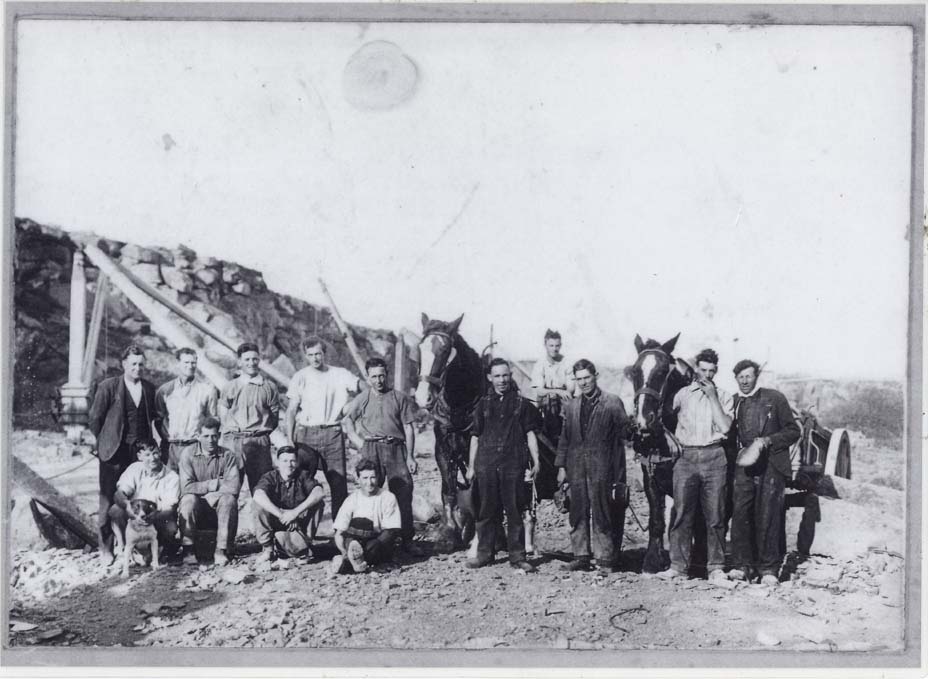1850-1899 | ||
|
European settlers called this area 'Goose Flats'. The area became part of the Parish of Cut Paw Paw and its 158 acres, referred to as CP D/sec 6, were granted as a farm and pastoral property to William Hall in 1852 after an auction in 1851. It appeared as Lot 10 and was sold for one hundred and seventy-three pounds and sixteen shillings. William called the property 'Stony Rises'. Rate records from 1863 indicate that William Hall leased the property to Samuel Bunting and Charles Newport. William and Michael Durkin ran 157 acres as a farm. Rate records from 1868-9 first record the property as a quarry and as occupied by Doherty. William Hall leased one acre of the property to James Horsley, quarryman and carrier, as a stone quarry for seven years from June 1869 for one hundred pounds per annum paid monthly. This arrangement carried on into the 1880's. The bluestone quarried was used as ballast by ships returning to Europe from docks at Footscray, Newport and Williamstown. The bluestone was also an important source of building material in Melbourne. Early quarry work was carried out manually by British tradesmen.
Flat grassland once more |
|
In 1884, the quarry was shared in 16 perch areas between: William Byers, Robert Allen, Andrew Anderson, James Gibson, Donald McKenzie, Thomas Neill and Joseph Willis.
Pavey and Company Quarry workers In the late 1880's, William Bannister leased an area of 32 perches. In the 1887-8 rates, William Bridges joined the other leaseholders. In the 1889-1890 rates, John Scriven and Robert Fenton joined the other leaseholders. In the late 1880's, Ernest Chambers, a solicitor, was rated for 150 acres for use as a farm. William died in 1889 and willed the site to Thomas Hoad Hall. In the 1890's other quarrymen appearing on the rates were Phillip Ludlow, J Beanland, Henry Booker, Cameron & Lafferty, John Gandion, Alex McDonald, Neal & Sharp, Ben Serrivan and John Hughes. There were fewer people listed in the 1890's depression including William Bannister, David Mitchell and Joseph Beanland, with Thomas Hall running the rest as a diary farm. (Some of these names are familiar as streets and roads in the district: Hall St, Durkin St, Anderson St and Chambers Rd) |
